What is a barcode and how to use it effectively?
A barcode is a graphical representation composed of spaced vertical bars that contain encoded data (numbers and/or text) in a numerical format. To decode this information, it is necessary to use a barcode reader, an electronic sensor specifically designed for this purpose. The very first product to be identified by a barcode dates back to 1974 and was a pack of chewing gum.
There are different types of barcodes, but they can be classified into two main categories: one-dimensional barcodes (1D) and two-dimensional barcodes (2D). 1D barcodes are the most commonly used and include formats such as the EAN barcode (European Article Numbering) that can be found on most of our products and purchases.
This type of barcode consists of 6 to 13 digits. We can also mention the ISBN barcode (International Standard Book Number) which is specific to books and serves as a reference for each publication.
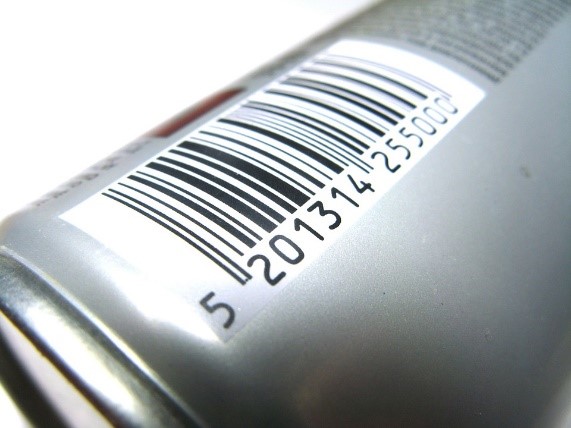
1D Barcode Label
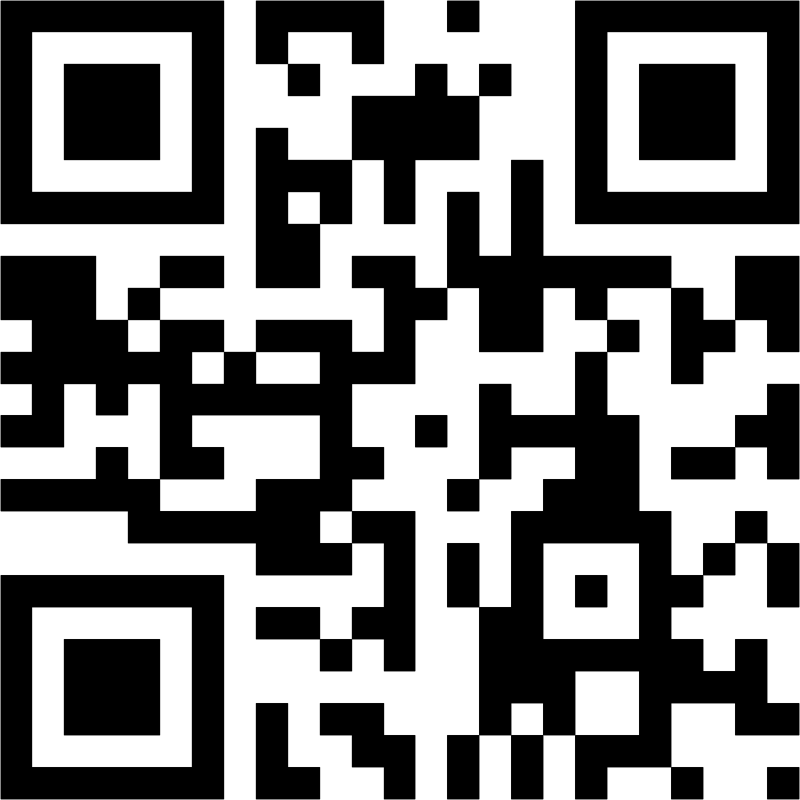
2D Barcodes (QR Code)
In one-dimensional barcodes (1D), we find the EAN (European Article Numbering) barcode, which is the barcode used on our products, purchases, and items. This barcode contains 6 to 13 digits. We can also include the ISBN (International Standard Book Number) barcode, which is specific to books. This barcode is generally found on all books as a reference for publications.
1D barcodes come in two variations: numeric barcodes and alphanumeric barcodes. For example, the "2 of 5" barcode is a type of numeric barcode that only includes numbers. There are many other types of purely numeric barcodes such as the 11 barcode, the 128 barcode, the GS1 barcode, etc.
The 2/5 barcode, also known as ITF (Interleaved Two of Five), consists of a series of interleaved numbers that allow for quick identification of goods and products.
On the other hand, the alphanumeric barcode known as "code 39" is capable of encoding both numbers and letters. It can contain up to 39 characters and is used in various sectors such as automotive, pharmaceuticals, construction, and equipment.
Let's now turn to 2D barcodes. They offer a much larger encoding capacity, ranging from 24 to 4296 alphanumeric characters, depending on the density of coding and the size of the 2D barcode. These square-shaped barcodes use small black squares to encode information, providing a much higher encoding capacity than traditional barcodes.
One of the major advantages of 2D barcodes is that they can be scanned using any smartphone, allowing instant access to a web page displaying encoded information or data, including long series of numbers, texts, and even web page addresses.
In conclusion, the knowledge and effective use of barcodes are essential for various applications. Whether it's 1D barcodes or 2D barcodes, they facilitate product identification and tracking, enable optimized management, and provide opportunities for consumer interaction.
Barcode-compatible labels on paper are used to print and display these barcodes clearly and accurately. Barcode label printers and thermal printing play a crucial role in producing these labels. Through their use, businesses can improve operational efficiency, optimize inventory management, and ensure precise product identification, thereby contributing to a satisfying user experience and reliable traceability.
2D barcodes exist in various formats, including:
The QR Code (QR Quick Response code): This is a widely known barcode format that is easy to generate and provides reliable and secure traceability. It has a remarkable capacity that can encode up to 4296 characters. However, as the barcode becomes more complex, a precise reader is needed to scan it.
The Datamatrix code: This is a highly compact 2D barcode format that can encode both numbers and letters, with a capacity of up to 3116 characters. This type of barcode is extremely fast to read. It is commonly used in electronic and mechanical marking applications.
These 2D barcode formats offer extended encoding capabilities and meet specific needs in terms of product traceability and identification. They can be used in various sectors such as logistics, industry, asset tracking, marketing, and many more.
In summary, the 2D barcode label, such as the QR Code and the Datamatrix code, provides advanced features for data encoding, allowing for precise traceability and optimized product management. It is important to choose the barcode format that suits your specific needs in terms of encoding capacity and compatibility with available readers.
What is the purpose of a barcode?
- Avoid manual entry of number sequences: By using a barcode, it is possible to avoid errors and time loss associated with manual data entry. Simply scanning the barcode provides quick and accurate access to the associated information.
- Enable fast and secure communication between a printed identifier and a computer: The barcode establishes an efficient link between the physical world and the digital world. It facilitates instant transmission of data from a product or item to a computer, simplifying management and tracking processes.
- Save time in managing assets, products, and items: Barcodes enable efficient stock and inventory management. By scanning barcodes, it is possible to quickly identify and track assets, products, and items, saving time and optimizing operational processes.
Barcodes contain specific data that allows deciphering of information such as the origin of a product, product details, and even a unique product-specific control code.
For commercial products, the non-profit and neutral global organization called GS1 (Global Standards 1) standardizes encoding methods in the supply chain, including barcodes. GS1's mission is to develop a standardized common language between businesses, facilitating the digitization of transactions and optimizing asset traceability. Barcodes (also known as EAN, UPC, or GENCOD) enable referencing and streamlining of product sales and management.
In summary, barcode labels are essential tools to avoid input errors, facilitate communication between the physical and digital worlds, save time in asset management, and optimize product traceability. GS1 plays a key role in barcode standardization and improving business processes.
How to decipher a barcode?
A barcode is composed of narrow and tightly spaced bars that enclose numbers or letters. Each barcode should start with a "Start" and end with a "Stop", with a mini-code in front of and after each printed code.
For 2D barcodes like QR Code, it is the three squares surrounding the code that act as the "Start" and "Stop".
To enable a computer to read 1D or 2D barcodes, it is necessary to use a suitable physical
barcode scanner such as an infrared sensor, a laser sensor, or a CCD camera. For 1D barcodes, a handheld barcode scanner, also known as a
barcode reader, can also be used.
These devices are highly effective for scanning products at close range during checkout or for optimizing inventory management. With a reading speed of up to 100 scans per second, they save time when entering inventory and controlling flows.
For the computer to understand the read information, it is necessary to use software capable of translating and interpreting the bars and dots into numbers and letters. Most 1D and 2D barcode readers already integrate this type of software, and their USB (or RS232) connectivity provides output with translated numbers and letters, similar to a standard keyboard.
Smartphones, equipped with high-definition cameras and suitable software, are capable of reading and translating most 1D and 2D barcodes.
For more information on choosing the right barcode reader for your needs, you can visit our page "How to Choose the Right Barcode Reader?". There you will find detailed explanations about our barcode readers and how they work.
In summary, to decipher a barcode, it is necessary to use a suitable physical barcode reader and translation software. Smartphones are also capable of reading and interpreting barcodes.
These types of labels can come in various forms:
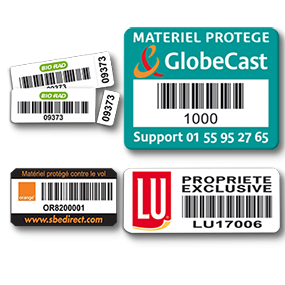
Pre-printed barcode labels.
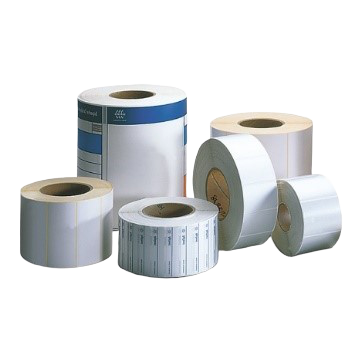
Blank labels on a roll for self-printing with barcodes.
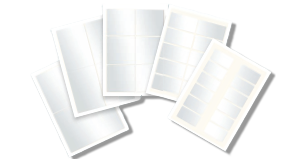
If you want to print them yourself, you can buy blank labels on rolls or on A4 sheets.
.png)
For roll print, it is necessary to use a printer of the type heat transfer. 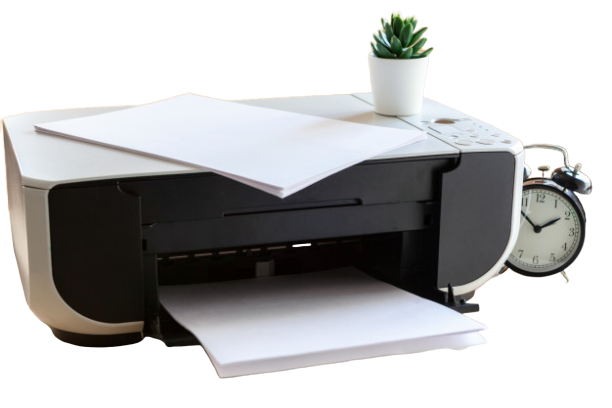
For printing on A4 sheets, any laser printer will do the job.
A barcode label always consists of different layers of varying quality:
A substrate or support, available in different thicknesses and resistances (wear, weather, UV), such as polyester, aluminum, VOID, PVC, or polypropylene.
An adhesive, with varying strength and thickness (single or double-sided), offering different levels of security (ultra-destructible, VOID, tamper-evident, and non-removable).
An optional transparent protective layer of variable thickness. At SBE Direct, we offer labels with a thick and transparent protection that ensures longevity and good transparency.
At SBE Direct, we offer a wide range of high-performance barcode labels, including labels made of polypropylene, polyester, VOID, PVC, aluminum, and tamper-evident plates.
In summary, barcode labels come in different forms, whether they are pre-printed or blank for later printing. Labels can be purchased in rolls for use with a thermal transfer printer or in A4 sheets compatible with laser printers. They are composed of multiple layers of quality, such as the substrate, adhesive, and optionally a transparent protective layer. At SBE Direct, we offer a variety of high-performance barcode labels suitable for different needs and applications.
How to print barcode labels?
Are you considering purchasing barcode labels? Know that you also have the option to print them yourself, offering flexibility and full control over your labeling processes. For this, you need to have a dedicated label printer and suitable software.
In most cases, it is recommended to use a printer specifically designed for label printing, such as a
thermal transfer printer. This type of printer uses an ink ribbon to print information on the labels using a printhead. The ink, in the form of wax or resin, is transferred onto the label, ensuring clear and durable printing.
When choosing your printer, it is important to consider several key features. First, the printing speed, which determines the pace at which you can produce your labels. Next, the resolution, which affects the fine details and print quality.
You should also consider the maximum label roll width supported by the printer, based on your specific needs. Lastly, the robustness of the printer is an essential criterion, whether it's a desktop printer for lighter needs or an industrial printer for high print volumes and intensive use.
Thermal transfer technology offers significant advantages for printing barcodes on labels or thermal ribbons. Unlike inkjet printers or laser printers, thermal printers provide optimal protection for label printing, ensuring optimal readability and durability.
Choose internal barcode label printing and free your business from the constraints and delays associated with outsourcing printing. With a high-quality label printer and suitable software, you can create custom labels that perfectly meet your traceability and product management requirements.
Thermal transfer printers are particularly recommended as they provide optimal protection for barcode printing on labels, ensuring maximum readability and durability. To choose the best label printer based on your specific needs, feel free to consult our detailed article titled "How to choose the right label printer?". You'll find additional information and advice to guide you towards the ideal solution.
Free your business from the constraints of external printing and opt for in-house barcode label printing. You'll gain efficiency, flexibility, and control, while ensuring optimal print quality for your barcode labels and other labels. Trust our expertise and choose the solution that best fits your specific needs.
Which software to use for barcode label printing?
When it comes to printing your own barcode labels, you have a wide range of dedicated software options that cater to your specific needs. These software solutions allow you to generate and print commonly used 1D and 2D barcodes, while ensuring consecutive numbering for efficient product management. For example, you can easily generate number sequences such as 0001, 0002, 0003, and so on.
For more complex numbering sequences, some software allows you to directly import code sequences from Excel or text files, providing optimal flexibility to meet your specific numbering needs.
These barcode label design software programs are compatible with most thermal transfer or laser printers available on the market. This means you can use your existing printer to print your barcode labels, avoiding additional investments.
It's worth noting that the Cablabel software is specifically designed for CAB thermal transfer printers. It offers seamless integration with these printers, ensuring an optimal printing experience and superior results.
Using barcode label printing software provides you with great flexibility and extensive compatibility with different printers. You can choose the software that best fits your needs and existing infrastructure.
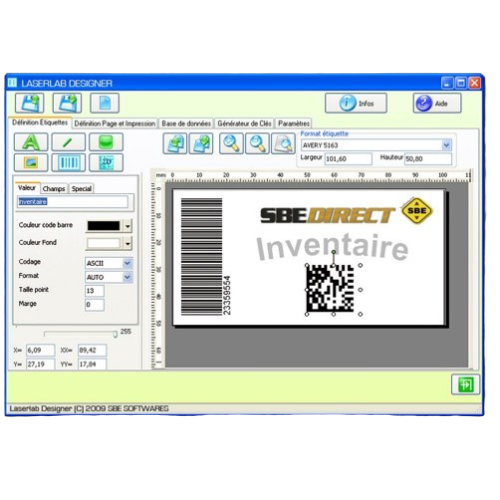
The Laserlab Designer is a cost-effective solution that offers autonomy in label production with just a few clicks and in record time. 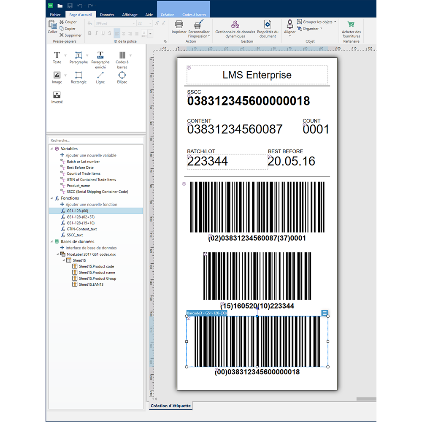
Several models are available on our SBE DIRECT website. The Nicelabel designer software, a reference in the industry (barcode label printing software). For more information on choosing the right barcode label printing software for your business, don't hesitate to consult our team of experts. We are here to guide you and help you find the ideal solution for your specific needs. Trust our expertise and choose the software that will allow you to easily and efficiently print your own barcode labels.
Different Barcode Label Formats:
At SBE Direct, we offer a diverse range of barcode labels tailored to your specific needs. We provide two particularly high-performing label formats:
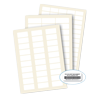
Barcode label A4 sheets: They are designed for all types of laser, inkjet, or dot matrix printers. We offer various qualities, resistances, and security features. 
Barcode label rolls: These roll labels are cost-effective and ideal for large quantities, such as labeling products in bulk... At SBE Direct, we place great importance on quality and durability of our barcode labels. Our labels are made with high-quality materials, offering exceptional resistance to wear, environmental conditions, and UV rays. Whether you need polypropylene labels for optimal resistance, polyester labels for superior durability, or other specialized materials such as VOID, PVC, aluminum, or tamper-evident plates, we have the solution to meet your requirements.
Trust our expertise and the quality of our barcode labels for reliable identification, efficient product management, and optimal traceability. Choose the format that best suits your needs and benefit from the excellence of our labels to optimize your business operations.
Comment bien choisir son étiquette code-barres ?
When it comes to choosing the right barcode label for your needs, it is essential to consider several key aspects. Here are the main questions to ask yourself to guide you in your choice:
What is the intended use for the label? Are you looking to secure your products, identify your items, or conduct inventories? Depending on this specific use, you will need to select a suitable label substrate. Some substrates offer increased resistance, others provide greater security, while others are designed for optimal durability.
On what type of substrate will the label be glued?It is important to choose an adhesive based on where the label will be applied. Some adhesives are stronger, some are permanent, and some offer additional security features such as destruction, VOID or tamper evidence. The thickness of the adhesive is also a factor to consider, especially for smooth or rough surfaces.
In what environments will the barcode label be used? Whether in an office, industrial, chemical or hospital environment, it is crucial to choose a suitable label. In some cases it may be necessary to opt for additional protection of the label, or to use a thicker substrate, such as aluminium plates or thick PVC, to cope with the specific environmental constraints.
What is the durability required for the label? The length of time the label must remain legible and functional is a key factor in the choice of label. Depending on the needs, this can vary from a temporary label used for products in shop or in stock, to a label requiring a few years' durability for goods to be inventoried, to a long-lasting label that can last from 10 to 15 years, such as for movable goods or industrial machinery.
At SBE Direct, we understand the importance of choosing the right barcode label for your specific needs. To make your selection easier, we have provided a table of the different barcode label models available on our website. This table will allow you to compare the features and specifications of each model, so that you can find the one that best suits your requirements.
Trust our expertise and the quality of our barcode labels for reliable identification, efficient management of your products and optimal traceability. Choose the solution that best meets your selection criteria and maximise the efficiency of your operations with our wide range of barcode labels. Whatever your industry or specific needs, we have the right solution to support your product identification and management projects.
Discover our
customizable RFID labels with a barcode. These labels are equipped with powerful technology, making them ideal for inventory management and product traceability. In fact, these labels contain an RFID (Radio Frequency Identification) chip that allows for instant remote data reading. We can customize them with your logo, text, and barcode to enhance your brand image.To learn more about this technology, visit the article "
Understanding RFID in 10 Points" on our website.How to customize your barcode labels?Customizing your barcode labels is a valuable opportunity to enhance your company's image and ensure clear identification of your products. At SBE Direct, we offer the option to customize your own barcode labels by adding your company name, logo, and even choosing the printing colors that reflect your brand identity.There are three key points for customizing your barcode labels:
- Text: You can add specific information such as your company name, product properties, or any other relevant details for identification.
- Company logo: For instant visual recognition, you have the option to incorporate your logo in black and white or color on your labels, thereby reinforcing your brand presence.
- Barcode type: You can choose from different types of barcodes, such as 1D or 2D codes, as well as specific encodings (EAN13, 2/5, Code 39, etc.) that meet your traceability requirements.
It is important to note that the length of the chosen number and identifier sequence will impact the barcode density. For a better understanding of sequential numbering, we invite you to visit our dedicated page "
Everything You Need to Know About Sequential Numbering".
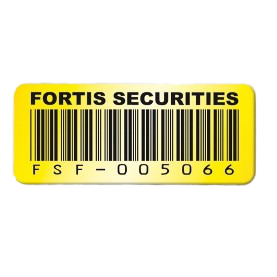
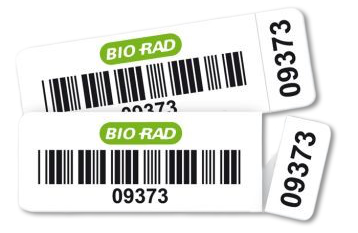
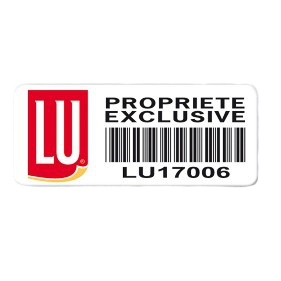
By customizing your barcode labels, you associate your company with clear, professional, and secure identification of your assets and products. Through the use of these labels, you significantly simplify and optimize the management and tracking of your assets, while saving valuable time.At SBE Direct, we understand the importance of enterprise asset security and are committed to providing high-quality products. That's why we offer a wide range of customizable security barcode labels to meet all your specific needs.Trust our expertise and the quality of our products to ensure reliable identification, optimized management, and enhanced traceability of your assets and products. Explore our range of customizable barcode labels and choose the solution that allows you to proudly showcase your brand.
Also discover our customizable RFID labels with a barcode. These labels feature high-performance technology, ideal for stock management and product traceability. Each label contains an RFID chip (Radio Frequency Identification) that enables instant data reading from a distance. We can personalize them with your logo, text, and barcode to enhance your brand image.
To learn more about this technology, visit our article "Understanding RFID in 10 Points".
How to customize your barcode labels?
Customizing your barcode labels is a valuable opportunity to strengthen your company’s image and ensure clear identification of your products. At SBE Direct, we offer the possibility to design your own barcode labels by adding your company name, logo, and even choosing the print colors that reflect your brand identity.
There are three key customization options for your barcode labels:
- Text: You can add specific information such as your company name, product details, or any other relevant identification data.
- Company logo: For instant visual recognition, you can integrate your logo in black and white or in color on your labels, reinforcing your brand visibility.
- Barcode type: You can choose between different barcode types such as 1D or 2D codes, as well as specific formats (EAN13, 2/5, Code 39, etc.) to meet your traceability requirements.
Please note that the length of your chosen sequence of numbers and identifiers will affect the barcode’s density. For a better understanding of sequential numbering, visit our dedicated page "All About Sequential Numbering".



By customizing your barcode labels, you associate your company with clear, professional, and secure identification of your assets and products. Using these labels allows you to significantly simplify and optimize your asset management and tracking, while saving valuable time.
At SBE Direct, we understand the importance of corporate asset security and are committed to providing high-quality products. That’s why we offer a wide range of customized security barcode labels to meet all your specific needs.
Rely on our expertise and the quality of our products to ensure reliable identification, optimized management, and enhanced traceability of your assets and products. Explore our range of customizable barcode labels and choose the solution that will help you proudly showcase your brand.

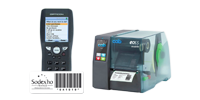
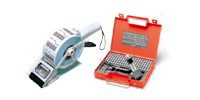
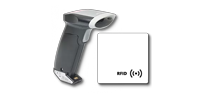
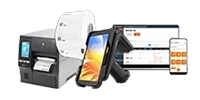
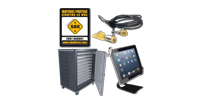

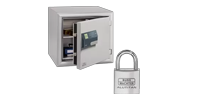
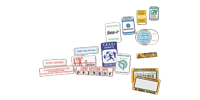
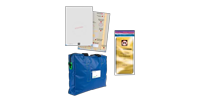

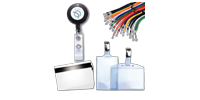


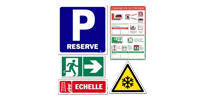
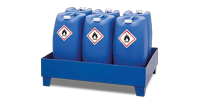


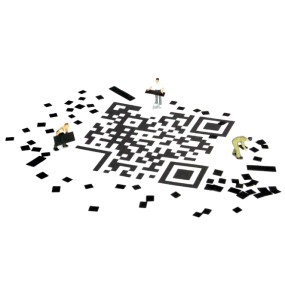

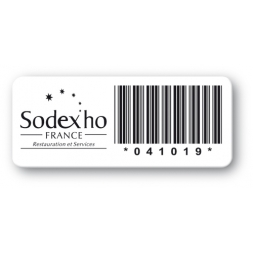

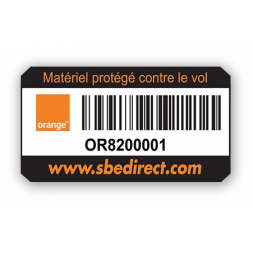



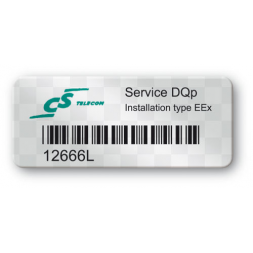
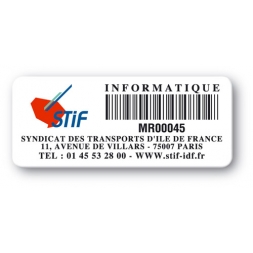
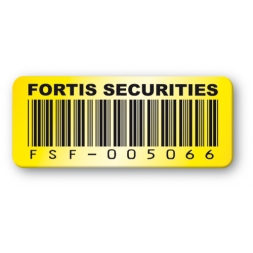
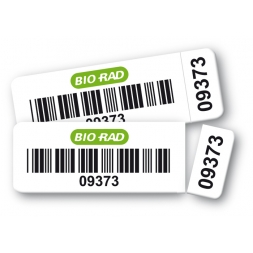
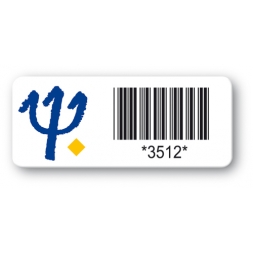




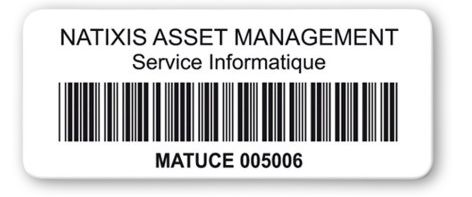
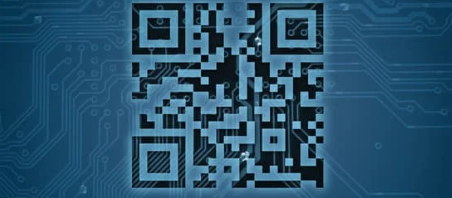
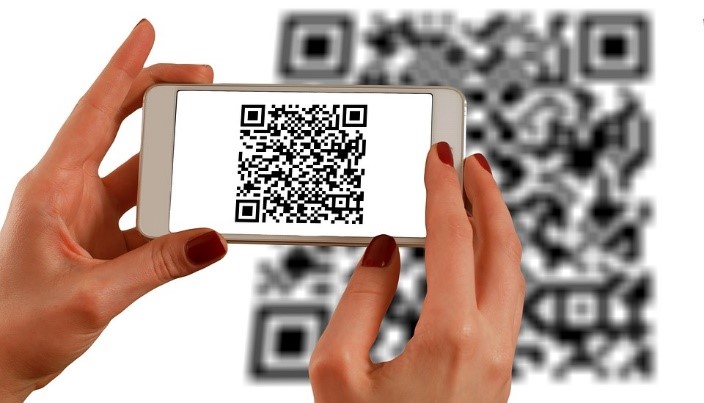
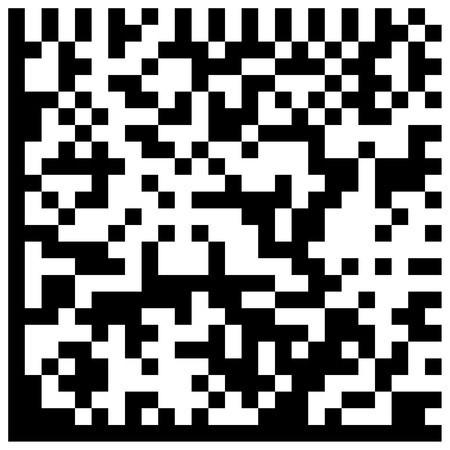
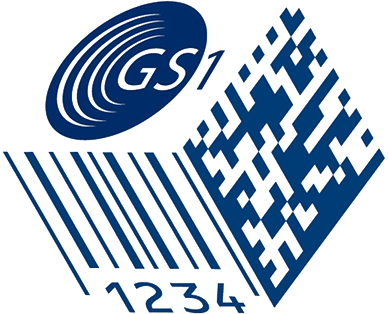
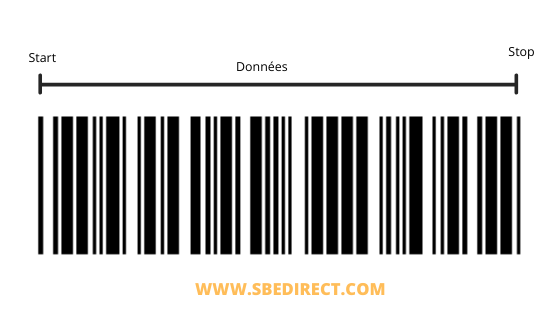
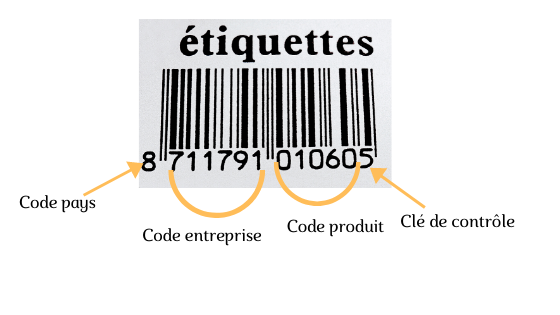
.png)



.png)

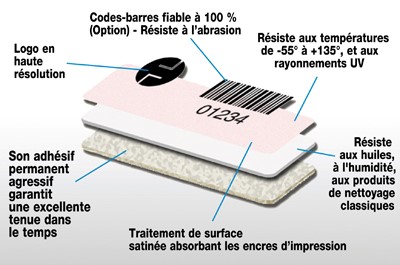
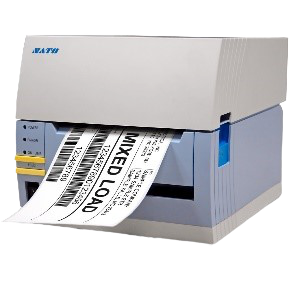




 By customizing your barcode labels, you associate your company with clear, professional, and secure identification of your assets and products. Through the use of these labels, you significantly simplify and optimize the management and tracking of your assets, while saving valuable time.At SBE Direct, we understand the importance of enterprise asset security and are committed to providing high-quality products. That's why we offer a wide range of customizable security barcode labels to meet all your specific needs.Trust our expertise and the quality of our products to ensure reliable identification, optimized management, and enhanced traceability of your assets and products. Explore our range of customizable barcode labels and choose the solution that allows you to proudly showcase your brand.
By customizing your barcode labels, you associate your company with clear, professional, and secure identification of your assets and products. Through the use of these labels, you significantly simplify and optimize the management and tracking of your assets, while saving valuable time.At SBE Direct, we understand the importance of enterprise asset security and are committed to providing high-quality products. That's why we offer a wide range of customizable security barcode labels to meet all your specific needs.Trust our expertise and the quality of our products to ensure reliable identification, optimized management, and enhanced traceability of your assets and products. Explore our range of customizable barcode labels and choose the solution that allows you to proudly showcase your brand..png)
.png)
.png)
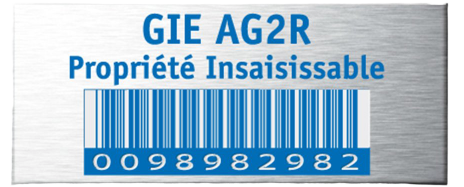
.png)
.png)
.png)
.png)